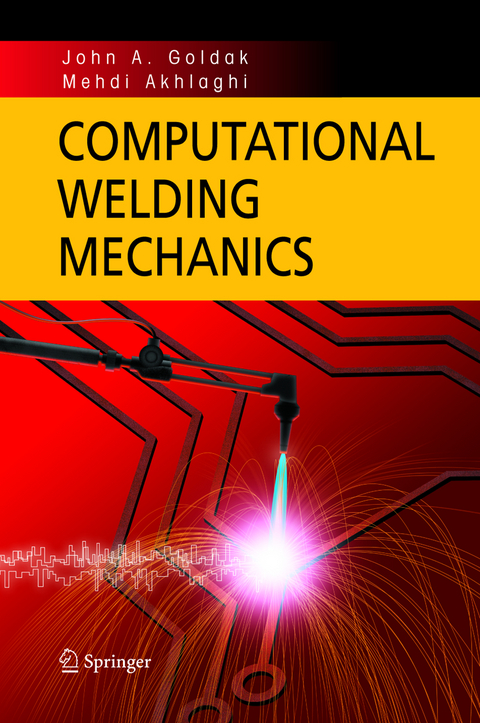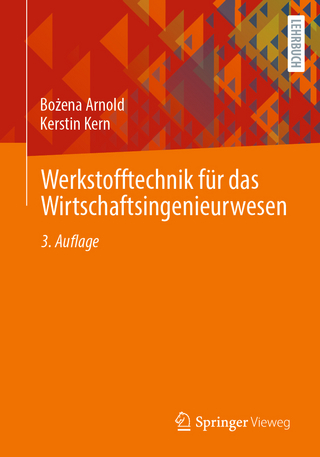
Computational Welding Mechanics
Seiten
2005
|
2005 ed.
Springer-Verlag New York Inc.
978-0-387-23287-4 (ISBN)
Springer-Verlag New York Inc.
978-0-387-23287-4 (ISBN)
Provides readers with an introduction to the principles and applications of computational welding. This book instructs the reader how to relate Computational Welding Mechanics (CWM) to the processes of design, build, inspect, regulate, operate and maintain welded structures. It is suited for practicing engineers and engineering students.
Computational Welding Mechanics (CWM) provides readers with a complete introduction to the principles and applications of computational welding including coverage of the methods engineers and designers are using in computational welding mechanics to predict distortion and residual stress in welded structures, thereby creating safer, more reliable and lower cost structures.
Drawing upon years of practical experience and the study of computational welding mechanics the authors instruct the reader how to:
- understand and interpret computer simulation and virtual welding techniques including an in depth analysis of heat flow during welding, microstructure evolution and distortion analysis and fracture of welded structures,
- relate CWM to the processes of design, build, inspect, regulate, operate and maintain welded structures,
- apply computational welding mechanics to industries such as ship building, natural gas and automobile manufacturing.
Ideally suited for practicing engineers and engineering students, Computational Welding Mechanics is a must-have book for understanding welded structures and recent technological advances in welding, and it provides a unified summary of recent research results contributed by other researchers.
Computational Welding Mechanics (CWM) provides readers with a complete introduction to the principles and applications of computational welding including coverage of the methods engineers and designers are using in computational welding mechanics to predict distortion and residual stress in welded structures, thereby creating safer, more reliable and lower cost structures.
Drawing upon years of practical experience and the study of computational welding mechanics the authors instruct the reader how to:
- understand and interpret computer simulation and virtual welding techniques including an in depth analysis of heat flow during welding, microstructure evolution and distortion analysis and fracture of welded structures,
- relate CWM to the processes of design, build, inspect, regulate, operate and maintain welded structures,
- apply computational welding mechanics to industries such as ship building, natural gas and automobile manufacturing.
Ideally suited for practicing engineers and engineering students, Computational Welding Mechanics is a must-have book for understanding welded structures and recent technological advances in welding, and it provides a unified summary of recent research results contributed by other researchers.
Computer Simulation of Welding Processes.- Thermal Analysis of Welds.- Evolution of Microstructure Depending on Temperature.- Evolution of Microstructure Depending on Deformations.- Carburized and Hydrogen Diffusion Analysis.- Welded Structures and Applications of Welding in Industrial Fields.- Fracture Mechanics.- Input Data for Computational Welding Mechanics.
| Zusatzinfo | XII, 322 p. |
|---|---|
| Verlagsort | New York, NY |
| Sprache | englisch |
| Maße | 155 x 235 mm |
| Themenwelt | Technik ► Maschinenbau |
| ISBN-10 | 0-387-23287-7 / 0387232877 |
| ISBN-13 | 978-0-387-23287-4 / 9780387232874 |
| Zustand | Neuware |
| Informationen gemäß Produktsicherheitsverordnung (GPSR) | |
| Haben Sie eine Frage zum Produkt? |
Mehr entdecken
aus dem Bereich
aus dem Bereich
Buch | Softcover (2024)
Springer Vieweg (Verlag)
CHF 46,15
Buch | Softcover (2025)
Springer Vieweg (Verlag)
CHF 39,15
Buch | Softcover (2024)
Springer Vieweg (Verlag)
CHF 69,95


